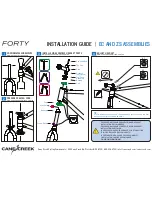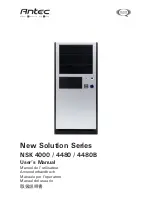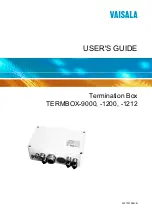
86
15 GLOSSARY
ACTIVE OPTOELECTRONIC PROTECTIVE DEVICE (AOPD):
its detection function is achieved thanks to
the use of optoelectronic receivers and emitters detecting the optical beams interruptions inside the device
caused by an opaque object present inside the specified detecting area.
An active optoelectronic protective device (AOPD) can operate both in emitter-receiver mode and in retro-
reflective light curtains.
BLOCK CONDITION (=BREAK):
status of the light curtain taking place when a suitably-sized opaque object
(see DETECTING CAPACITY) interrupts one or several light curtain beams.
Under these conditions, OSSD1 and OSS2 light curtain outputs are simultaneously switched OFF within the
device response time.
BREAK:
see “Block condition” in the glossary.
CONTROLLED MACHINE:
machine having the potentially-dangerous points protected by the light curtain or
by another safety system.
CROSSING HAZARD:
situation under which an operator crossing the area controlled by the safety device
and this latter stops and keeps the machine stopped until the hazard is eliminated, and then enters the
dangerous area. Now the safety device could not be able to prevent or avoid an unexpected restart of the
machine with the operator still present inside the dangerous area.
DANGEROUS AREA:
area representing an immediate or imminent physical hazard for the operator working
inside it or who could get in contact with it.
DETECTING CAPACITY:
sensor function parameter limit as specified by the manufacturer, which activates
the electro-sensitive protection equipment (ESPE). In case of an active optoelectronic protective device
(AOPD), with resolution we mean the minimum dimension, which an opaque object must have in order to
interrupt at least one of the beams that constitute the sensitive area.
EDM:
see “External device monitoring” in the glossary.
ELECTROSENSITIVE PROTECTIVE EQUIPMENT (ESPE):
assembly of devices and/or components
working together to activate the protective disabling function or to detect the presence of something and
including at least: a sensor, command/control devices and output signal switching devices.
EMITTER:
unit emitting infrared beams, consisting of a set of optically-synchronised LEDs. The emitting unit,
combined with the receiving unit (installed in the opposite position), generates an optical “curtain”,
i.e.
the
detecting area.
EXTERNAL DEVICE MONITORING (EDM): device used by the ESPE to monitor the status of the external
command devices.
FINAL SWITCHING DEVICE (FSD):
part of the control system involving machine safety conditions. It breaks
the circuit to the machine primary control element (MPCE) when the output signal switching device (OSSD)
becomes inactive.
FORCE-GUIDED CONTACTS:
Contacts can be guided forcibly when they are connected mechanically so
that they can switch simultaneously, when the input stage is active.
If one contact of the series remains “hanged”, no other relay contact is able to move.
This function allows the control of the EDM status.
MACHINE OPERATOR:
qualified person allowed to use the machine.
MACHINE PRIMARY CONTROL ELEMENT (MPCE):
electrically-powered element having the direct control
of machine regular operation so as to be the last element, in order of time, to operate when the machine has
to be enabled or blocked.
MIN. INSTALLATION DISTANCE:
min. distance necessary to allow machine dangerous moving parts to
completely stop before the operator can reach the nearest dangerous point. This distance shall be measured
from the middle point of the detecting area to the nearest dangerous point. Factors affecting min. installation
distance value are machine stop time, total safety system response time and light curtain resolution.
Summary of Contents for SG4-RB2-050-OO-W
Page 1: ......
Page 3: ......
Page 7: ......
Page 73: ...66 SG4 RB2 3L SG4 RDB2 3L...
Page 74: ...SG BODY REFLECTOR MUTING 67 SG4 RB2 3T SG4 RDB2 3T...
Page 91: ...84 ACTIVE PASSIVE...
Page 92: ...SG BODY REFLECTOR MUTING 85 ACTIVE PASSIVE...
Page 95: ...88...



































